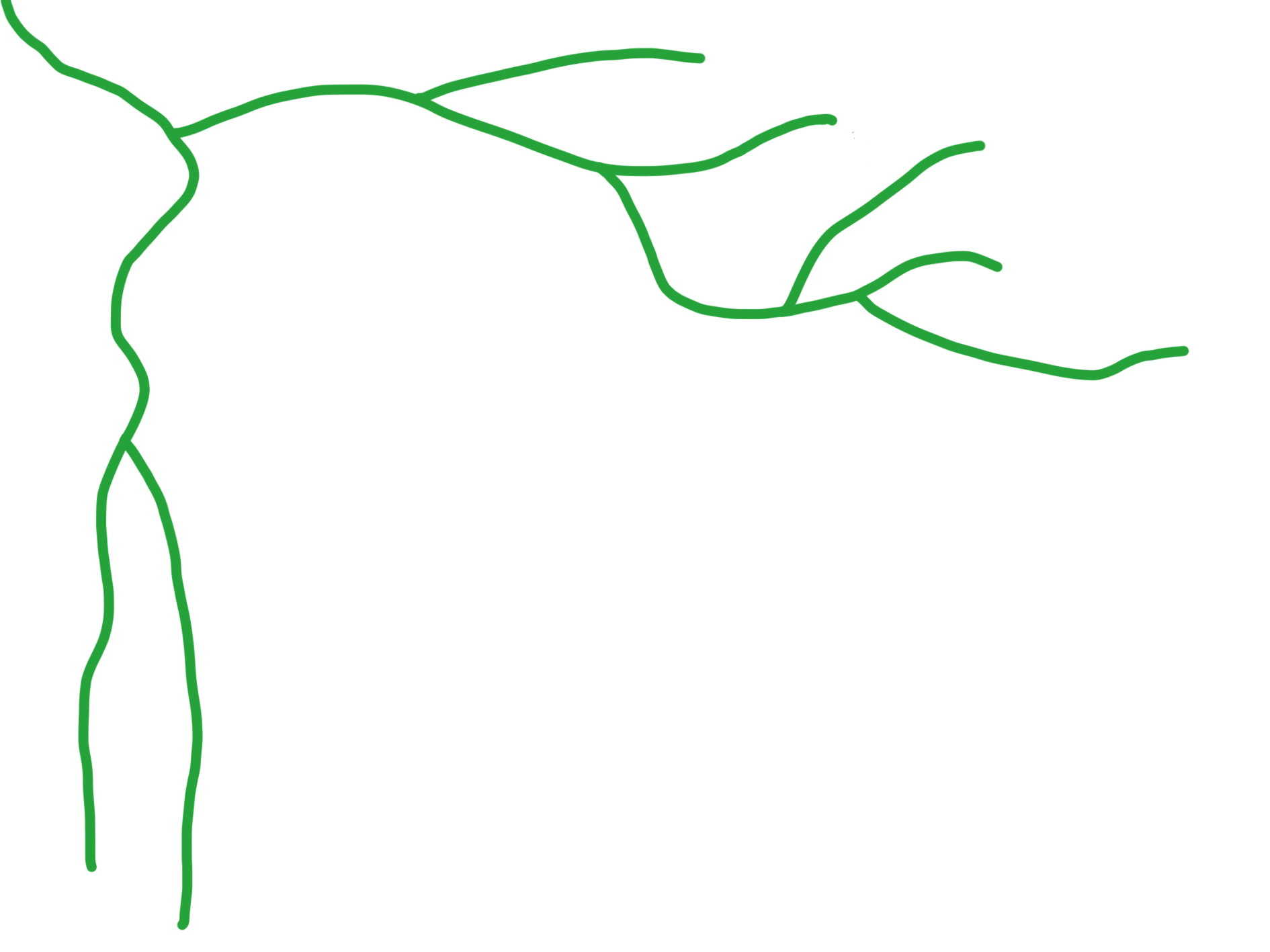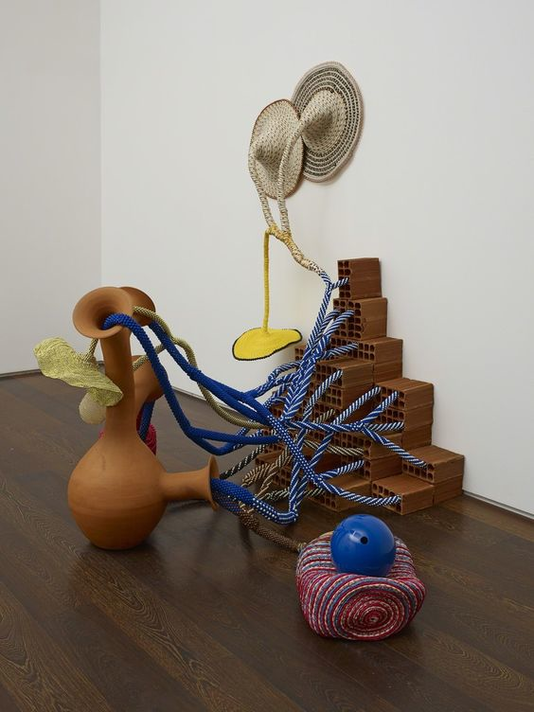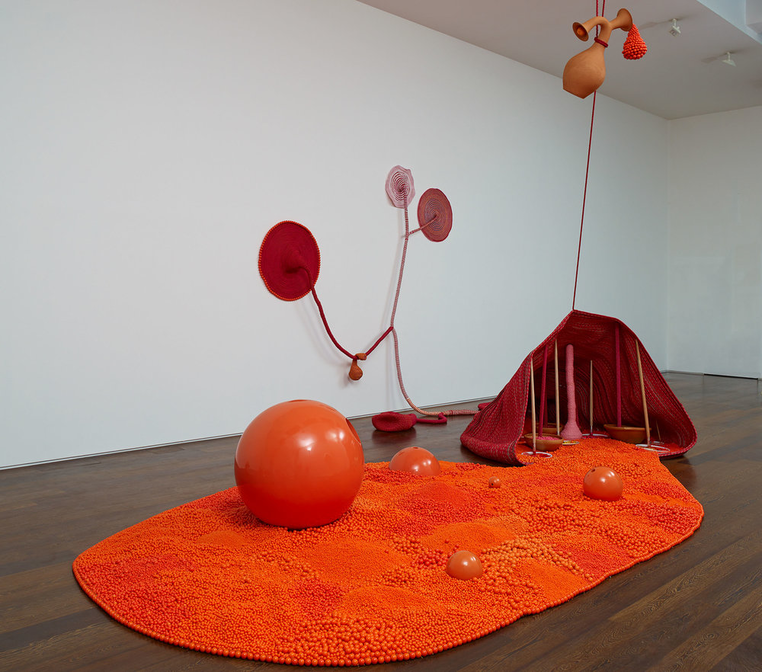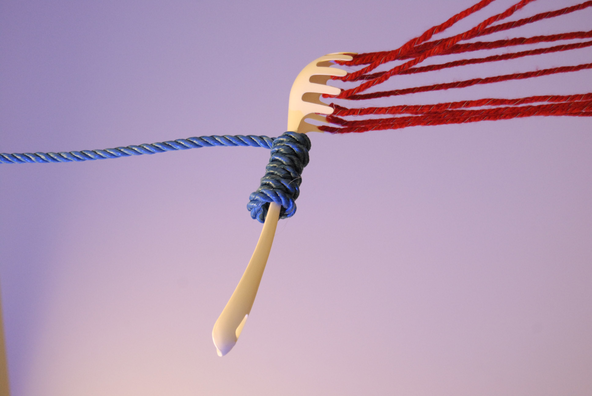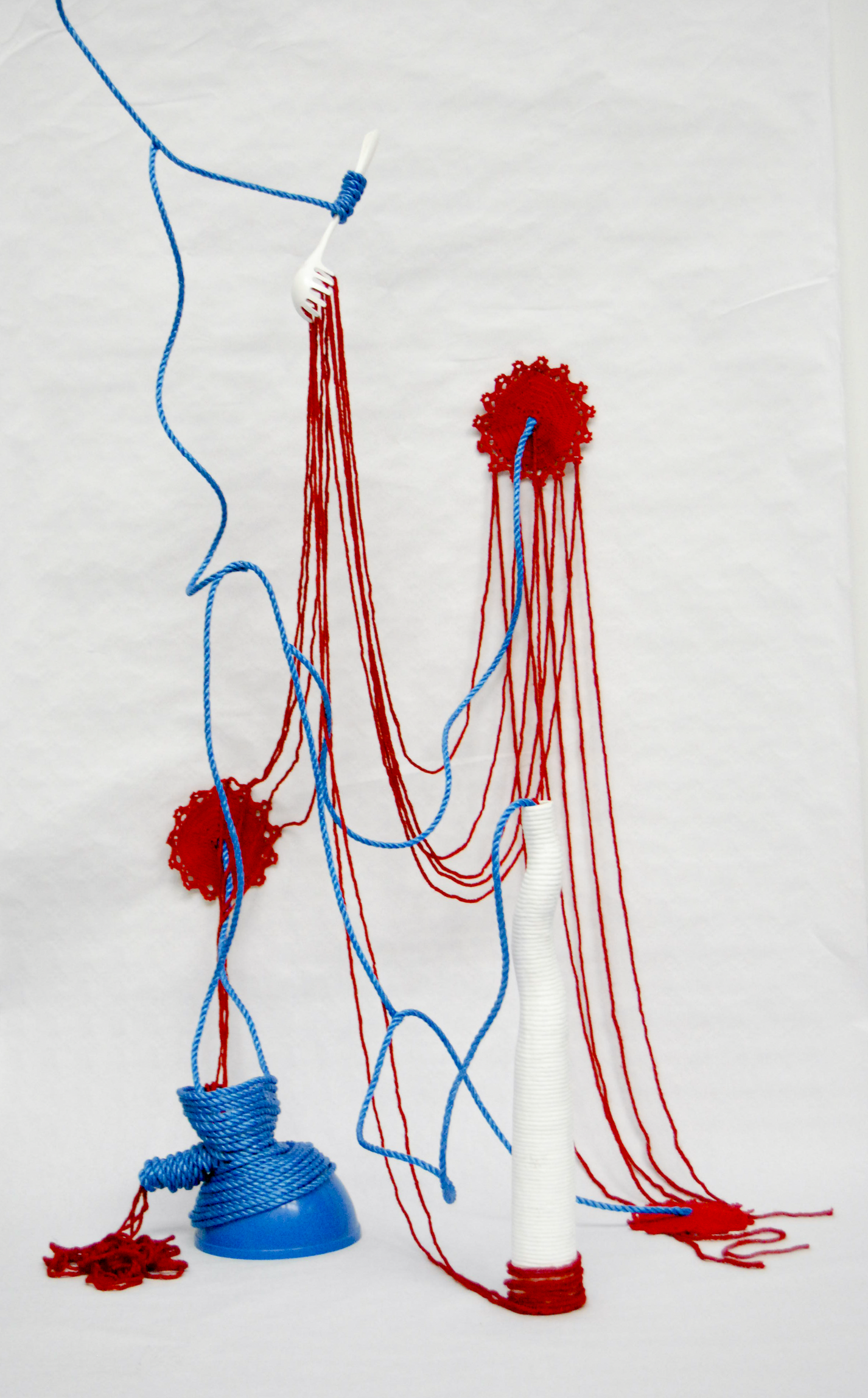I was happy to find Maria Nepomuceno and her work. I think the way Nepomuceno connects different objects together with textiles is really interesting. The fact that she makes sculptures and installations that are adaptable is refreshing. A red line in her work is the connection through ropes.
What also interests me about her work is the usage of already existing and found objects in combination with organic textile forms. I feel that the ropes have an important role in her installations and by placing them into objects and findings she makes her work one piece.
The striking colors in comparison to nature colors make it a good contrast. In some of her works she also works in the same color range but in general, she has a conscious choice of colors and it seems like an important expression in her work.
Maria Nepomuceno
I bumped into the artist Maria Nepuceno by searching on 'connecting parts art'. I was searching on these words because in my work I work with connecting different parts in knit through floats. After making the monster where I disconnected parts and connected them again, I felt the urge to dive further in the theme of connection.
Using traditional methods of rope weaving and straw braiding as well as techniques of her own design Maria Nepomuceno has, since the the early 2000s, developed a process of sewing coils of coloured rope in spirals. She explores the potentially endless permutations of this adaptable form in sculptures and installations that incorporate beads, playful ceramic forms and found objects of varying sizes. Often realised in carnival-bright colours, these works are chromatically, culturally and metaphorically rich, suggesting animals, plants, the human body and landscape ranging from the microscopic to the macrocosmic.
Nepomuceno's fluid forms articulate space in a playful way, sometimes inviting tactile exploration. The notion of the rope as a connecting thread is as conceptual as it is literal in Nepomuceno's practice. In recent years collaboration has become a more overt factor in her work. She has worked with indigenous Huni Kuin people in the state of Acre in the north of Brazil to develop weaving techniques and has also formed links with community groups to realise projects for her exhibitions. For instance, elements of Nepomuceno’s installation Tempo para Respirar (Breathing Time), 2012 – 2013, at Turner Contemporary, Margate, were made in collaboration with a local artist studio group brought together by the artist specifically to learn her techniques and work on the commission. This spirit of cooperation and openness has extended to the display of several of her large-scale installations, where visitors are invited to interact directly with her elements of her work.1
Connection
The following components I took out of Nepomuceno's work as inspiration:
-Usage of existing/found objects
-Connecting through holes
-A rope as a connector
I took my own work also into consideration by making this artwork. An aspect that I took out of my knitting samples was the connection of multiple threads from one to another part.
My aim for connecting the object with the textiles was to follow the form of the object and let it deviate into another form. The connection of objects and textiles and try to make them work together was a playful process. A potential development to work on further can be integrating objects into textiles by following their form. Another finding with potential is the usage of colors as a connector, in this work, there is a certain unity that is created through color. In general, color has an important role in my work and could also serve as a connector.
